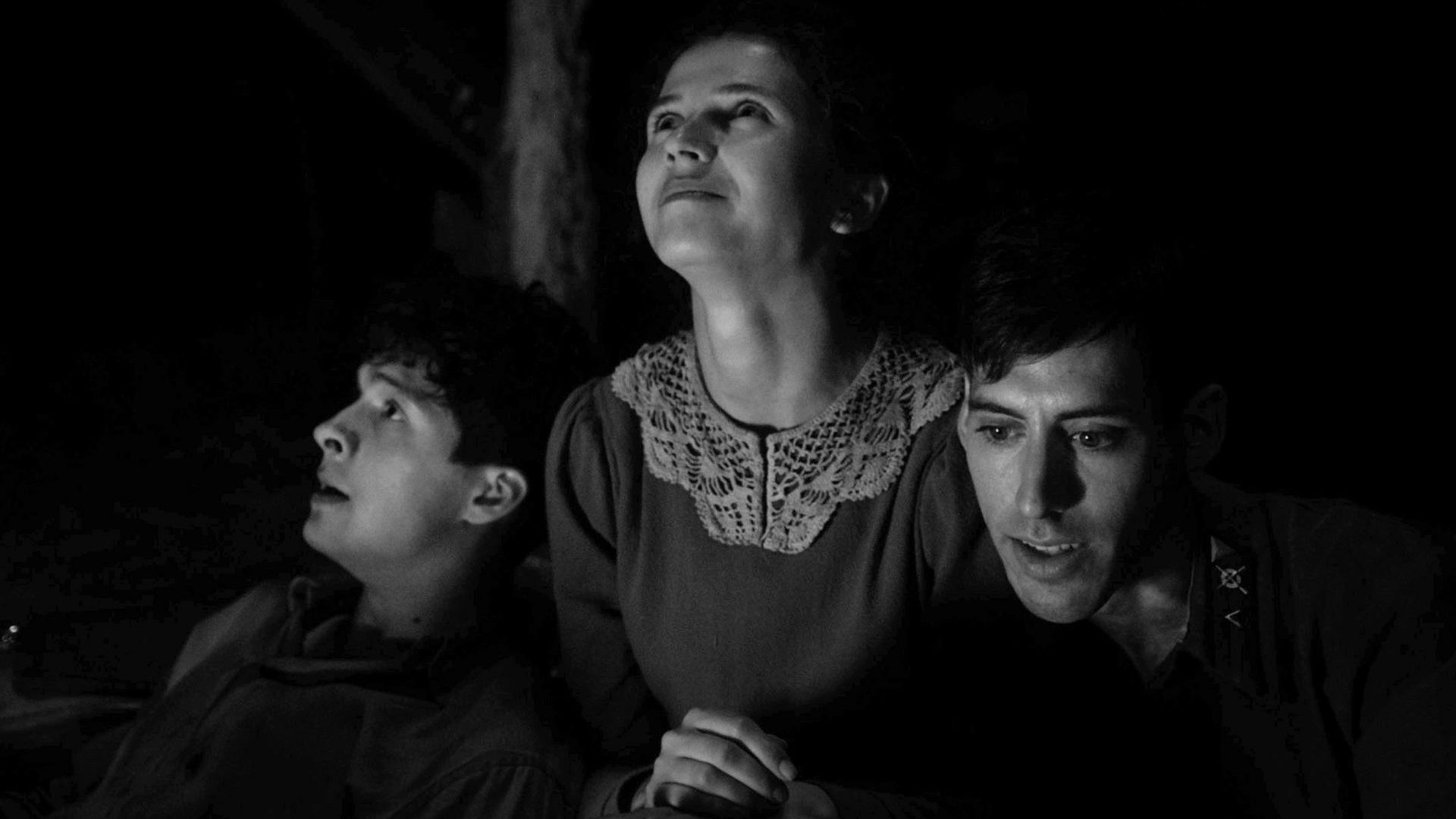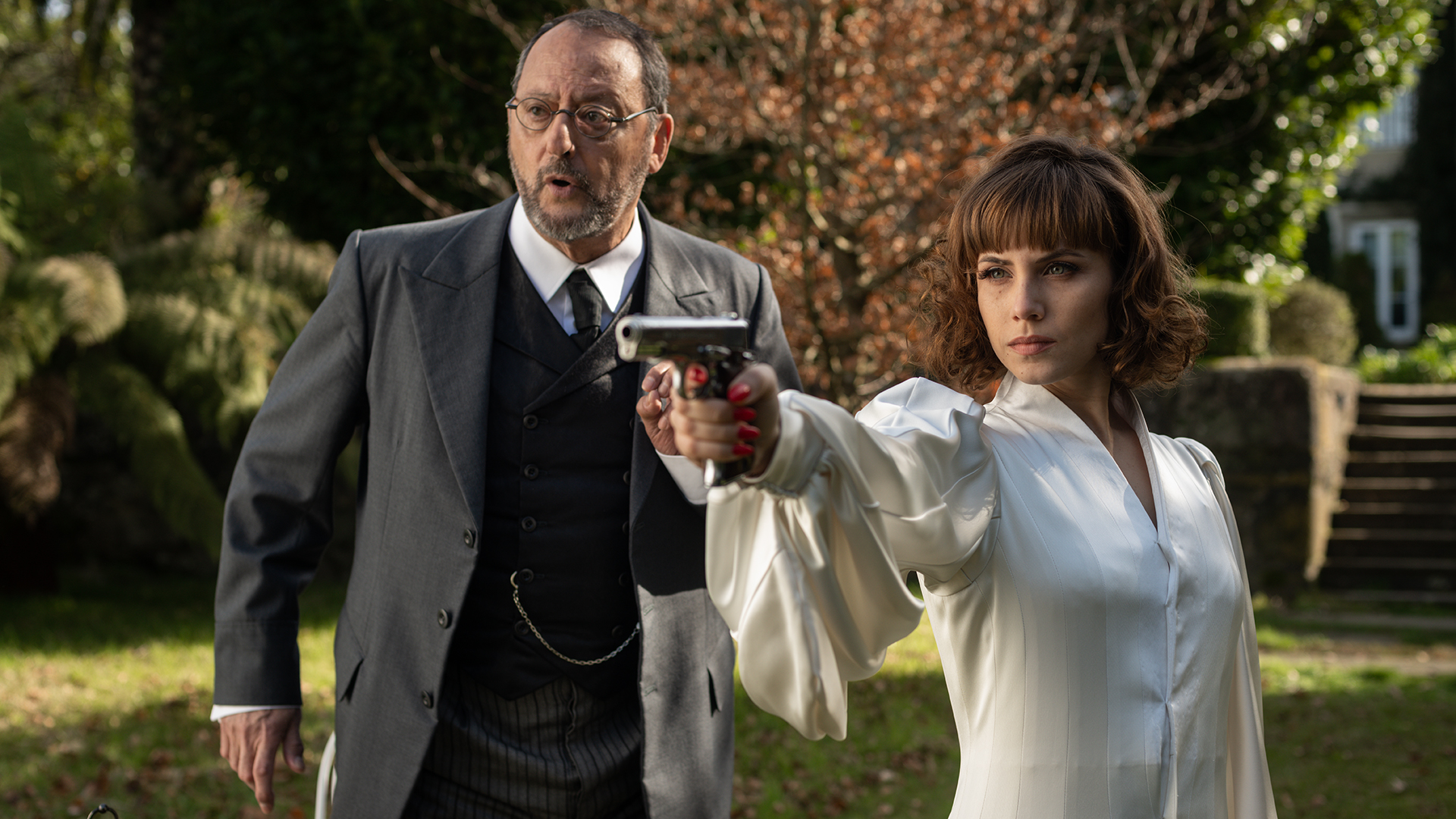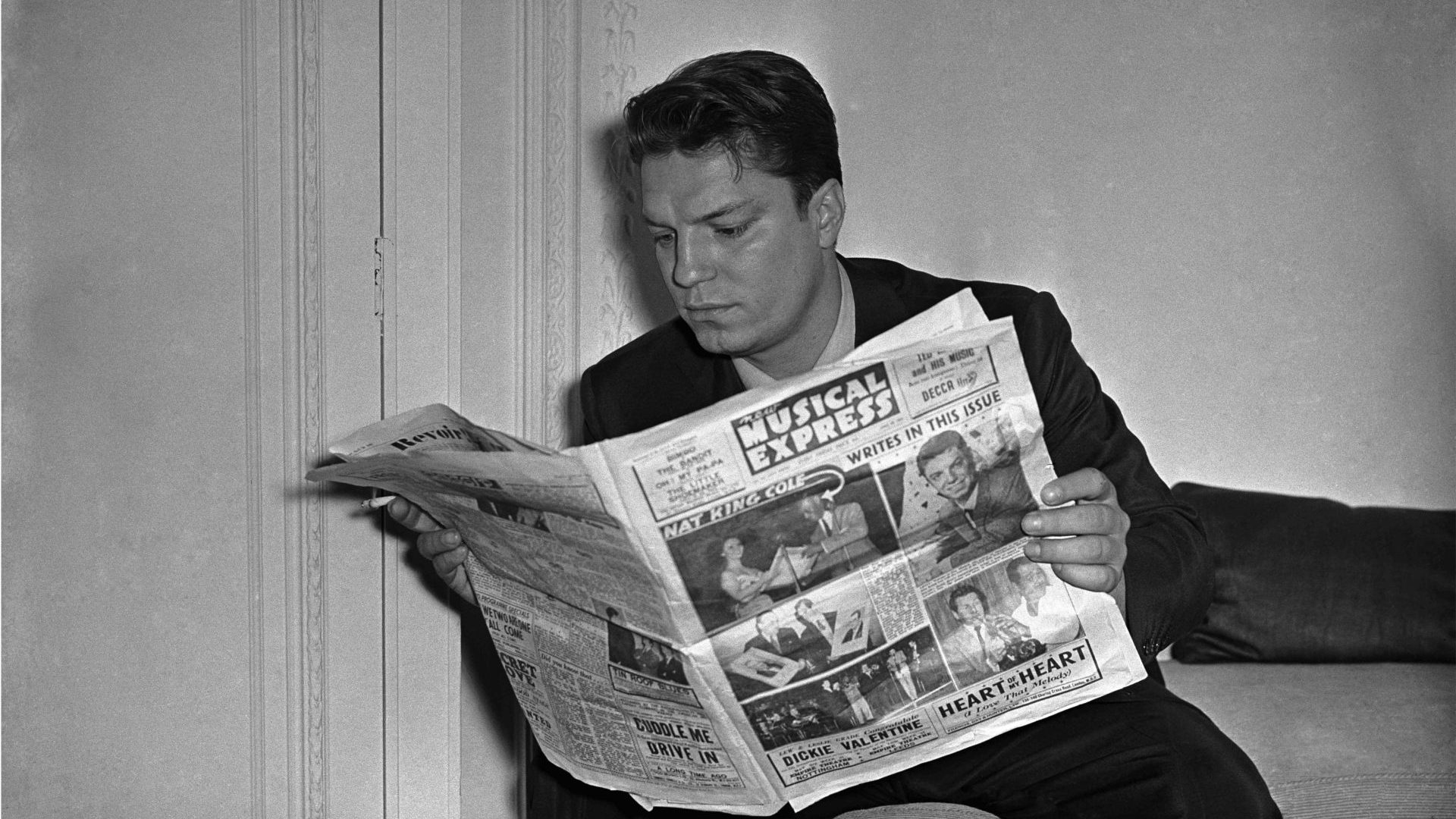Two of the more extraordinary European films I’ve seen this year play in London this week as part of the UK Jewish film festival. They’re both films about the Holocaust, which I know you might expect from a Jewish film festival, although actually it is really about presenting as much of the Jewish experience as possible and not being fixated on the Shoah.
But look closer and these are very modern, indeed post-modern, cinematic reactions to the unfathomable brutality of the Nazis. Shttl is an amazing film, mostly in black and white with dialogue entirely in Yiddish and set in a Ukrainian shtetl – one of the small, rural Jewish villages that were so prevalent across Europe, the sort of places and lives depicted in the musical Fiddler on the Roof.
It takes place in June 1941, on the eve of a Nazi onslaught, the real Operation Barbarossa, that wiped out Jewish life in Ukraine. Few traces of that life remain, so much so that the makers of Shttl (the absence of the “e” in the title marks that disappearance) had to build their shtetl as a set from scratch, including reconstructing the only remaining wooden synagogue in Europe, blessed and consecrated until it was fit for both filming and holding actual prayer services.
The intention was, after filming, to preserve the synagogue and the shtetl for educational purposes, some kind of memorial. Of course, after the shoot wrapped, the set, an hour to the north of Kyiv, was engulfed in war again. “We don’t know what’s happened to it now,” says the director, Ady Walter, with a sigh. “We know it became a minefield around there and that there was heavy fighting, but we have no idea what has become of the construction.”
He describes to me the eeriness of filming in the shtetl in June 2021 while 150,000 Russian troops massed and manoeuvred on the border, their rumblings audible and palpable just as they were for the shtetl dwellers in 1941, as depicted in the film. “I think once you build something like that set and the synagogue, so that it lives again and in a sense becomes real again, to pull it down, to destroy it once again, that’s… well…” and Walter searches for the word… “that’s not kosher.”
What struck me most about Shttl is how it recreates, in a way I’ve rarely seen, just how life in the shtetl might have been. Although I can only trace some of my family to the city of Odesa, whence they left for the UK to escape the pogroms in the late 1800s, for all I know, this shtetl life is one many of my ancestors lived. I used to hear this language, certainly, as a child, the Yiddish used in the film was spoken daily by my great-grandparents and persisted in phrases used by my grandparents.
To hear words they used around the Friday night table is both a joy and a ghostly feeling. “Tzoures im kishkes, nachas, shaygetz, meschuggener, bubbemeises” – very roughly: “sick to my stomach with worry, pleasure, non-Jews, crazy person, old wives’ tales”. These float around the shtetl as they must have for centuries and as they later did in the Lower East Side in New York or, indeed, the East End of London.
The other must-see film in the festival is Three Minutes: A Lengthening, a remarkable documentary that has already been tipped for Oscars, directed by Bianca Stigter, a Dutch historian who is also the wife of the director Steve McQueen.
It is an entire film spun from a fragment of celluloid found in a Florida cupboard, a Kodak home movie reel shot by a Jewish emigré, David Kurtz, as he revisited the place of his birth in Poland in 1938 as part of a European grand tour with his wife and some friends, a popular summer trip for prosperous Americans at the time. But only certain Jews would have made the schlep to a village north of Warsaw.
Strangely, when I interviewed Walter, the director of Shttl, in London, I referenced 12 Years a Slave and its reconstruction of the horrors of the plantation, without having seen Three Minutes or knowing of McQueen’s connection to it. But it’s clear the two films are involved in extrapolating the memory and truth of trauma through image and reconstruction.
And McQueen’s huge Year 3 photography project of thousands of UK school children (of which my son is part), will perhaps one day have a similar impact through its faces. Representation matters, you see.
“It is proof of the enormous raw power of film as a recording no other art form can give us,” says Stigter from Amsterdam when we meet on Zoom. “You look at this battered, destroyed, frayed bit of film and you think, my God, I’m seeing into a place and time that doesn’t exist any more but that lives again in front of my eyes. That still gives me goosebumps,” she says. “It’s something I call the Pompeii effect.”
Stigter’s doc is narrated by Helena Bonham Carter, who urges us to look closely at the faces and places caught by David Kurtz’s holiday footage. The film slows down and zooms in on little boys, girls, women, old men with beards, large crowds gathered in a village square all trying to get into the lens of what, to these Polish peasants, would have been a very new-fangled invention. That camera, and the Kodachrome film inside it, is now the only proof of their existence.
“It’s very amateur footage,” says Stigter of the film that, she surmises, may have been the very first images Kurtz ever took with this camera, something he bought specially for his big summer holiday as Kodak ramped up its advertising campaigns in America. “And that is very valuable. It is not propagandistic, and not artistic in any way, so there’s an incredible immediacy you get when watching the images, a feeling of intimacy that shows people and a place that had probably never been filmed before.”
And yet Stigter is quick to alter the mood of her discovery: “But a very important part of that feeling is that we, the viewer, know what is about to happen to these people in the film; they don’t know, but we can’t warn them, we can’t help them, they’re locked in a movie. We can’t yell to them to run, run, or to get out. We want to so much, so it is a very frustrating endeavour to watch them so full of life.”
A year after Kurtz’s holiday visit, the Jewish residents of Nasielsk will be rounded up and deported by the Nazis. Out of 7,000, only a hundred will survive. Stigter’s film tracks one of them down, a Maurice Chandler, whose daughter spotted a chubby face in the Holocaust Museum in Washington and immediately recognised her dad.
He gives a delightful, sometimes matter-of-fact, yet poignant commentary on some of the people he can see and recollect, these faces on the cusp of destruction and erasure. He recounts how, before the Germans came, his family sent him over the river to Russian-held Białystok and somehow he got to America. He is now 97 years old and lives in Detroit.
Stigter visited him there to get the audio interview in the film. She says he was thrilled to see the film, because he could finally prove to his family that he had a past and a childhood, that “he hadn’t landed from Mars.”
“When you are a Holocaust survivor,” says Stigter, “you have nothing left. No family, no traces, no objects or friends. You are often the only one, all alone, all your culture is gone. Imagine suddenly seeing it again…”
It strikes me eerily how both these films are about witnessing the final moments of a civilisation on the eve of being erased for ever.
Walter calls the creation of Shttl his only way of giving justice to the dead and to a past of centuries that was wiped away – “to honour the slaughtered”, as he puts it.
“The shtetl was a marketplace for many years, of trade and relationships, a place full of complex people of all ages and beliefs, not just Jews. But amongst the Jews, there were so many types – some religious and clinging to the old ways, some young and with hopes and dreams of leaving for the big cities, to work in commerce or films, or to go to America or France.
“This is the time I try to capture, a time that would have faded anyway through modernisation and assimilation, if it wasn’t destroyed – maybe naively, I felt I could use cinema to bring back the dead, so for me, a religious person, it was a religious experience in a way. Cinema makes things alive, an explosion of life. There’s a whole culture here in my film… there are many ways of being Jewish, from Chasidic to convert, and what connects them all is culture. This is what culture means, and what the Nazis wanted to wipe out.”
Stigter is not Jewish, although, as she says, every Amsterdammer has grown up with stories of the Anne Frank house. Her film, like Shttl, captures a culture on the eve of its disappearance.
“It’s a glimpse of a culture the Nazis wanted to erase,” she says of the 70-minute collage she creates from the three minutes of celluloid. “So watching it is itself an act against that erasure, a small victory against that evil. That’s why I invite the viewer to look at this fragment and look again. The longer you look, the longer the victory. I don’t care if the faces are blurry, I felt that having seen these faces, these lives, I have to honour them and show them as close as I can.”
There’s so much to add about both these films. Take from them any messages you can.
Stigter tells me that she recently screened her film back in Nasielsk, in a cinema that was extant during the time of the film being taken and which, therefore, also witnessed the rounding up of the Jewish inhabitants. She says the modern city of Nasielsk is now embracing its Jewish past, erecting memorials and putting on plays and Jewish dances to honour the dead, something never done before.
That’s nice, but it always seems to me, when I’ve visited old Jewish quarters and seen the plaques and memorials, that these places love to embrace the absence, as if celebrating having got rid of the Jews. I wonder how embracing they’d all be if the survivors and descendants showed up, wanting to move back in?
That’s what that word, lengthening, means in the documentary’s title: ponder deeper. Something to think about next time you get your vintage Super 8 camera out in a former synagogue, or pan your iPhone around the quaint cobbled square of an old ghetto. Or whenever you watch a film about the Holocaust.
Such films form a crucial part of the UK Jewish film festival, particularly in the modern way they treat the Holocaust, as a trauma and an absence, but also something ineffable and cultural that binds Jewish experience.
I ask Michael Etherton, who has been CEO of the festival for the last 10 years, what, for him, is the purpose of a festival of Jewish films?
“Over the last 25 years the Jewish film festival has been the key element of a broader cultural movement to rebuild and celebrate a diverse Jewish life much more publicly,” he says. “It has enabled conversations within the British Jewish community about Jewish history, identity and experience, which had previously been ignored or overlooked.”
One of the quiet successes of the festival is its annual short film competition, the Pears Short Film Fund, of which I’ve been on the board as a selector and occasional entrant (unsuccessful, I might add…) and which receives scripts and ideas for all sorts of Jewish stories.
“British Jews look so often to America or Israel for a sense of Jewish culture and identity, ignoring the richness and specificities of British Jewish life. We are Britain’s oldest minority and over the last 350 years have developed a unique culture that is worth celebrating – incredible Jewish music, not to mention our comedy, language intonations, food, customs and traditions – all a special blend of Jewishness and Britishness.”
There is also now a Short Doc Fund, which is adding to the mosaic of modern Anglo-Jewish life in unexpected ways that will be vital to the history and ongoing narrative of how Jews here view themselves and express themselves.
“Our Jewish life has often remained largely behind closed doors and separate,” admits Etherton. “I think the price of doing this was perhaps a loss of confidence in the richness and importance of our own ancient and fascinating cultural heritage. In terms of ‘what is Jewish?’ I like us to take a very broad view. A film does not necessarily need a bar mitzvah scene to get the Jewish content ticking. We have to dig deeper than that, to where the Jewish content is much more subtle and profound.”
Shttl screens on November 17 at the Curzon Mayfair in London
Three Minutes: A Lengthening plays as part of the UKJFF on November 12. It will be released in the UK on December 2
The UK Jewish Film Festival runs 10-20 November in nine UK cities. ukjewishfilm.org




